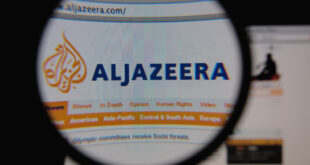The last defenders of the Islamic State terror group’s self-declared caliphate are refusing to surrender, clinging to their last sliver of land while hiding among hundreds of civilians.
Commanders with the U.S.-backed Syrian Democratic Forces, observers and officials with the anti-IS coalition say about 300 mostly foreign fighters have so far rebuffed efforts to get them to give up an area in the eastern Syrian village of Baghuz that spans no more than a few hundred square meters.
Complicating efforts to finish off the terror group’s physical caliphate, they say, is the presence of up to 1,000 civilians, including IS family members, children and possible hostages, as well as ongoing concerns that more IS militants and civilians may be hidden in a network of tunnels extending from Baghuz.
The Britain-based Syrian Observatory for Human Rights, which has been monitoring the conflict in Syria, said on its website Monday that SDF commanders had rejected a request by the remaining IS fighters to allow them safe passage into neighboring Iraq in exchange for the release of hostages and SDF prisoners.
SOHR and other activists also said that the SDF did allow several truckloads of food to be delivered to the IS-held area, possibly in return for the release of 10 SDF fighters.
The slow-moving developments in Baghuz came as a top U.S. commander visited with SDF leadership.
The head of U.S. Central Command, Gen. Joseph Votel, met Monday with SDF commander-in-chief Mazloum Kobani in Syria, Monday.
Following the meeting, Kobani told reporters he asked that the U.S. and its allies keep a force of 1,000 to 1,500 troops in Syria to help keep IS from resurging.
“We would like to have air cover, air support and a force on the ground to coordinate with us,” he said, adding that should include “a partial group of American forces.”
U.S. President Donald Trump announced this past December that U.S. forces would be pulling out of Syria. But while some equipment has been removed, no timeline has been established for when the last of the U.S. forces would leave.
Votel has argued for continuing to provide support for the SDF in their efforts against IS, but said following his meeting with Kobani, leaving U.S. troops on the ground in Syria was not under consideration.
“So, the discussion really isn’t about U.S. forces staying here,” he said. “We’ve looked at potentially what coalition (forces) might be able to do here.”
U.S. defense officials have been involved in ongoing discussions with coalition members about increasing their help and assistance once U.S. troops ultimately withdraw, though no agreements have been reached.
Meanwhile, Washington’s European allies have been pushing back against demands they do more to help deal with the hundreds of foreign fighters who joined IS but are currently in SDF custody.
“I think our major endeavor now should be not to allow them to come back to Europe,” Hungarian Foreign Affairs Minister Peter Szijjarto said at a meeting in Brussels Monday.
Trump late Saturday tweeted that he had asked Britain, France, Germany and other countries to “take back over 800 ISIS fighters that we captured in Syria and put them on trial,” he wrote, using an acronym for the terror group.
“The alternative is not a good one in that we will be forced to release them,” he added.
Responding to questions about the tweets, French Justice Minister Nicole Belloubet told France2 television Monday her country “won’t respond to injunctions.”
Britain likewise pushed back, pointing to a statement Friday by Home Minister Sajid Javid.
“If you have supported terrorist organizations abroad, I will not hesitate to prevent your return,” he said.
SDF commanders said Monday they currently are holding about 800 foreign fighters from about 50 countries, along with about 700 of their wives and 1,500 children.
Previous estimates from the SDF, U.S. officials and observer groups have put the number of fighters much higher.
Kurdish officials Monday called their presence a “time bomb.”
 Eurasia Press & News
Eurasia Press & News

